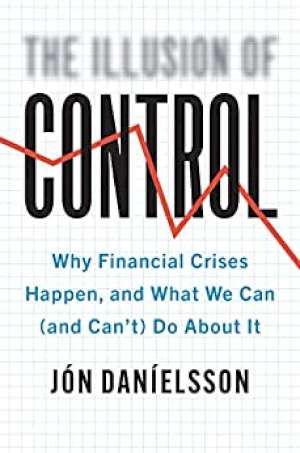26 April 2023
The Illusion of Control
Why Financial Crises Happen, and What We Can (and Can’t) Do About It
Jon Danielsson
2022, Yale University Press, 274 pages,
ISBN 9780300234817
Reviewer: Leath Al Obaidi

In this book Jon Danielsson delves into the challenges of regulating the complex financial system. The book is highly relevant for anybody interested in financial stability since it exposes the weaknesses of current approaches to predicting financial crises, and it explores avenues to improve financial regulation and supervision in the future.
Danielsson argues that because the system is so complicated, regulators can only control a small part of it and that bad outcomes often happen in other parts of the system that are out of sight. He discusses the interconnectedness of the financial system and how this vulnerability can lead to risky behaviour. The financial system is vulnerable because individuals are connected to so many others. This is a problem because those who act responsibly can still be indirectly connected to and impacted by people who are taking careless risks.
He also explores the government’s response to financial crises, considering how regulatory responses swing from one extreme of too much regulation to too little, and how this can be costly and counterproductive. Achieving the right balance is crucial to enable the economy to innovate and grow. Too little regulation has a tendency to misdirect individuals towards taking on more risk than is advisable, leading to bankruptcies and crises. However, too much regulation chokes the growth path of the economy.
Danielsson also highlights the role of human psychology in the financial system. He explains how different people perceive risk differently, based on their experiences and biases. This can make it difficult to accurately assess and regulate risk. Danielsson argues that the way we perceive risk is often more important than the actual risk itself, and that our desire to control the world around us can lead us to rely on unreliable numbers and metrics to assess risk. This is what he calls it “risk theatre”.
One key point Danielsson makes is the importance of understanding and addressing endogenous risks, or the destabilizing responses of financial market participants to shocks. He argues that regulators typically focus too much on exogenous risks, or shocks coming from outside the financial system, and neglect endogenous risks. This can lead to a lack of preparedness for potential crises and a lack of accountability for those who contribute to them.
Throughout the book, Danielsson offers examples from history to illustrate his points. From the first global financial crisis in 1763, caused by the reckless financial innovation of Dutch banker Leendert Pieter de Neufville, to the vulnerability of monoculture illustrated by the story of the Gros Michel banana.
Danielsson also explores how people often try to learn lessons from past crises in order to prevent future ones but argues that this is often not effective because each crisis is unique. Instead, he suggests that a better approach is to encourage diversity among financial institutions. He argues that this would make it less likely for everyone to buy or sell at the same time, reducing the risk of herd behaviour and leading to smoother prices over time.
Overall, “Illusion of Control” offers a compelling and thought-provoking exploration of the challenges of regulating the financial system. Danielsson’s arguments are well-supported, and his writing is engaging. This book is a must-read for anyone interested in regulatory finance and its role in society.
You can watch an interview with the author, Jon Danielsson via the link below.
